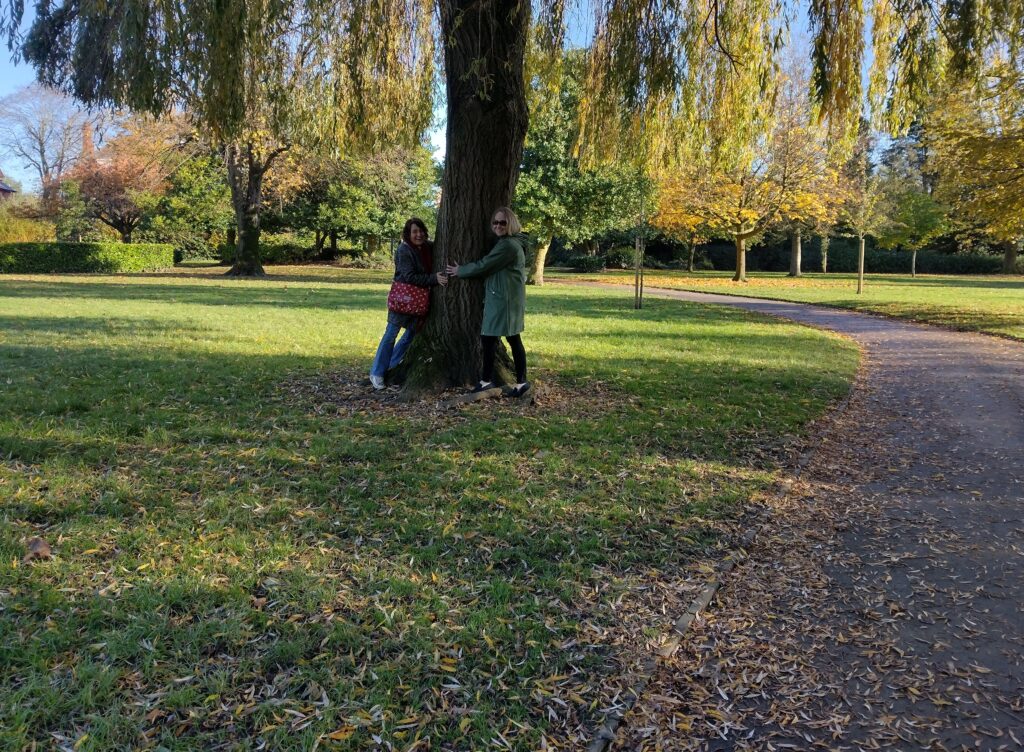Rummaging in a box of photos, I find one I’ve forgotten. Three figures sit on a rock at the summit of a Lakeland peak; is it Langdale Pike or Bowfell? I was dragged up most of them at some point in my childhood, protesting every minute of the uphill slog; absorbing the view from the top; cherishing the memories.
I’m wearing a lime-green floral bikini top and cotton shorts, my six year-old tummy protruding unselfconsciously as I tear into an apple. My aunt, who must have been in her sixties by then, looks exactly as she always did: spotless white shirt, short-sleeved on this occasion; pale blue cashmere cardigan; quality hiking breeches; not a hair out of place. Coiffed into a ‘permawave’ in the style of Princess Margaret – whom she did not admire – it was the fashion of her day, and she never saw the need to change it.
My mother is there, too; we’re on our annual walking holiday with her elder sister and Uncle Stanley. His camera takes only slides; years later, with the older generation gone, I’ll take the slides to be printed and this photograph will be my favourite. For Atta Pooh, my difficult and adored aunt, is smiling.
Born at the tail-end of the nineteenth century, ‘Atta’ was a lady of empire and all that was wrong with it. She was bigoted, dismissive, steely and, at times, terrifying. Her brother, younger in more than just years, branded her simply ‘a snob’.
‘Better to be dead than red!’ she would declare, as she placed her cut-crystal glass of pink gin upon a lace doily. The exclamation would be directed at me in particular, but it needn’t have been; my younger self hung on her every word. I’d nod solemnly, feeling as if I knew what she meant, and she’d wink at me conspiratorially.
Having lived through two world wars and with a strong, if irrational, suspicion of foreigners – which to her meant anyone who wasn’t white, English-speaking and wealthy – I am sure she would have voted for Brexit. Yet I wonder how she would have viewed it all now, with her most-dreaded spectre of Soviet-style communism along with its doppelganger, far-right fascism, once again casting an insidious shadow across Europe.
Although professing a general dislike of children, Atta Pooh knew how to get me on side. Removing the pearl stud from her ear and showing me the pierced hole would always make me squeal. My mother’s lobes were intact and this voluntary disfigurement alarmed me so much that I begged her to show me again and again. When no-one was looking, she invariably complied.
After she married Uncle Stanley – when he was no longer ‘just an old friend’ with a sick mother – we would go to stay in their Huddersfield town house with its long, wood-panelled toilet always smelling of pepper, and its faded Lakeland watercolours. The mysterious walk-in larder which she called the scullery was full of home-made jam and Yorkshire parkin that I never saw her make and was forbidden to investigate. She was a fine cook but it was always traditional and firmly English: steak and kidney pudding, fish pie, apple crumble, served on a starched linen tablecloth with napkins curled inside silver rings.
I would try to be on my best behaviour during these visits. She intimidated my mother and I was frightened of disappointing her: of spilling my drink, of marking the tablecloth, of appearing ignorant during the adults’ conversations. Later, of getting tipsy and sounding ‘red’. Later still, of failing to get a proper job, or of failing, generally. A retired teacher from a long line of professionals, aunt Kathleen, who forever remained my ‘Atta Pooh’, was impatient for me to do something suitable with my life. When it became clear I never would, she stopped mentioning it.
She didn’t like me much, but I think she loved me. She wouldn’t have mentioned that, either. At the age of ninety-five and with her beloved Stanley gone, she left this life on her own terms. Her final words, as the ambulance crew attended her:
‘I shall be getting a private room, of course’.
It’s fifty years since she married Uncle Stanley and moved from Davenport to his home in Huddersfield, where most of my memories of the couple reside. I can clearly see the red-brick house on the outskirts of Stockport, though, and its immediate surroundings: a play-park, where I loved the red and yellow painted horses with their line of ‘saddles’, rocking back and forth in an unwinnable race; dense, scratchy bushes behind tall railings, through which I caught glimpses of somewhere I was desperate to go, but not permitted to; an area of tall trees and mud banks I charged up and down, and the road. I remember the road.
Atta Pooh’s house was at the end of a quiet, leafy street, with thick vegetation between the building and whatever lay beyond. In front of the house, the street curved around and led back to the main road, which in those days would have been the trunk road into Stockport and Manchester. We couldn’t hear the traffic from inside, though. It was all very genteel. There were steps – in my mind, quite a few – up to the front door, set within a decorative brick archway. There were bay windows; I once slept on a chaise-longue tucked into one. There was an intriguing basement which one could almost peek into from garden level. I have a feeling someone else lived in it. Perhaps a troll.
In November this year, I visited my old friend Bridie, who moved from Glasgow to Ireland in the early 90’s, where we lost touch, then reappeared a few years ago in Stockport, of all places. My birthday seemed an ideal time to reconnect, finally meet her family and stay in their lovely home.
After telling her about Atta Pooh and the house I remember so vividly, we set off on a cold, sunny morning with a mission to find it. The key, Bridie said, was the park. There weren’t so many to choose from. Was there a railway nearby? I couldn’t recall. Perhaps I wouldn’t have noticed. I wasn’t much interested in motorised transport or anything too urban; I’d have been looking at the trees. This was unhelpful.
We trudged around the suburbs and I sensed the architectural style getting ‘warmer’, then cooler as we moved from neighbourhood to neighbourhood. Eventually there was only one street left to try, and Bridie felt it fitted my description, aside from the very visible and audible railway. For me, the key was the position – at the end of the street, on a curve in the road. I wasn’t hopeful. Then, as we approached the final houses on the final street, I stopped, feeling something akin to a gut-punch, as Bridie and Morag both stared at me. Here it was!
It was exactly as I had described it, although I was confused about the number of steps to the front door, and the smart park gates right beside it. Of course, it could be a new entrance. There was little doubt in my mind. But just to confirm, before we went to celebrate with the best vegan chocolate brownie I’ve ever had, I messaged my cousins, the only people left in the world who would possibly remember where our aunt had lived. They both came back to me with the same address – which wasn’t this one. My ears went down. I was so certain – I’d felt it. Disappointed, we trudged off to find the address I’d now been given. Why didn’t I just ask in the first place? But when we reached it, just a couple of streets away, I knew this was not the house I remembered. There was nothing familiar about it at all. She must have moved.
My cousins don’t remember her living anywhere else but confirmed that, as they are both somewhat older than me, they might not have been visiting by the time I came along, as they would have been ‘doing their own thing’ by then. It’s perfectly possible we visited her in different properties, in different decades.
Our searching completed, we headed for the cafe. On the way, we walked past dense, prickly bushes, taller than us, straining against ornate black iron railings. The feeling returned.

Since arriving home, I have become obsessed with proving, if only to myself, that this house was, indeed, the one I remember so clearly from the 1960’s, when I was small enough to play on roundabouts and see-saws. I have tried every online resource I can think of, without success. The census records are not available, and sales records for the property don’t reach back that far. I took a free trial of Ancestry.com, but as the information I seek isn’t there, I didn’t feel inclined to pay the rather steep subscription. Intriguingly, though, I saw that someone else – someone whose name I have never heard, within our very small family – has Atta Pooh saved to his investigation list. When I have solved the mystery of the address, perhaps I’ll feel ready to go down another rabbit hole. But for now, I see her at her front door, under the archway, at the top of the steps, as the autumn leaves fall onto the pavement. She’s waving us goodbye.
